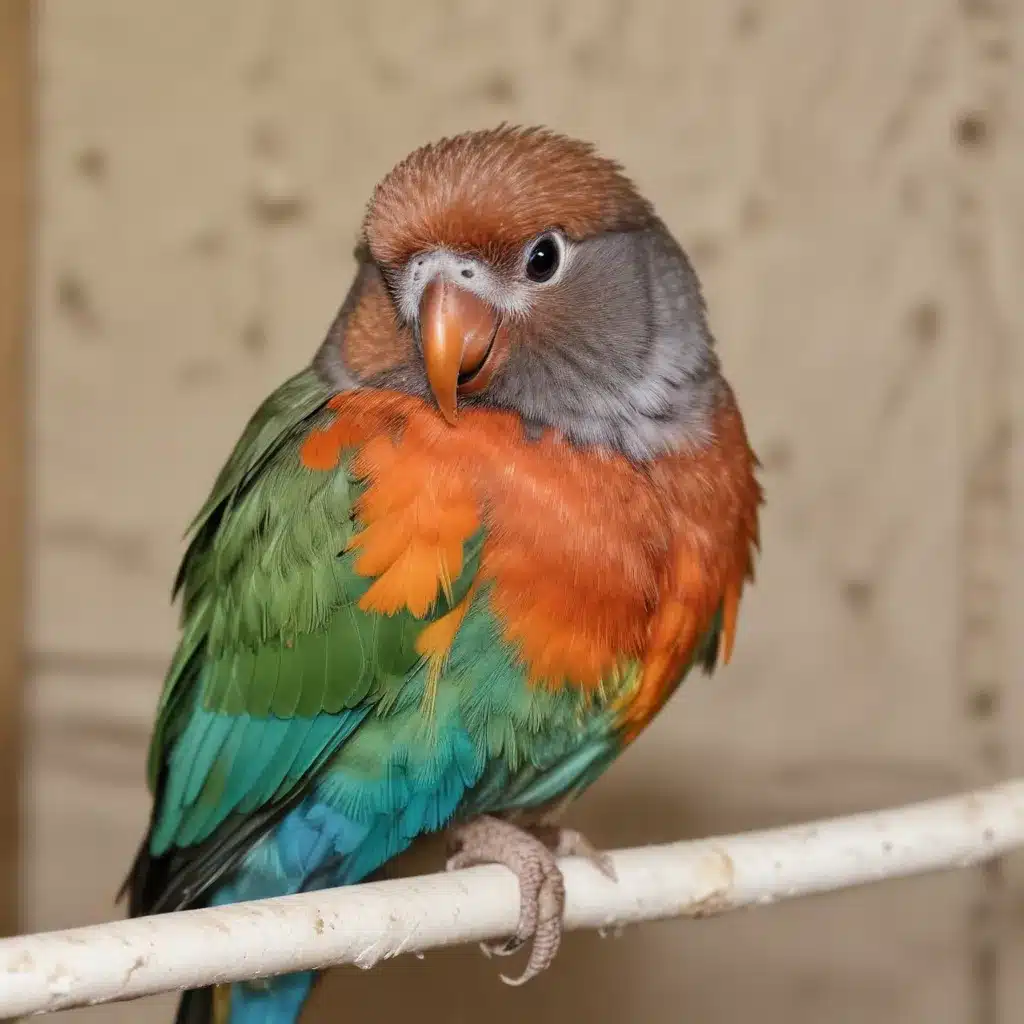
Avian Welfare and Rehabilitation
As an experienced avian caretaker, I’ve dedicated my life to the specialized care and rehabilitation of rescued birds. Whether it’s a plucked parrot, a wing-clipped cockatoo, or a fearful conure, these precious creatures deserve our utmost compassion and commitment to their well-being.
Rescued Bird Populations
The avian rescue community faces a growing challenge as more and more birds end up in need of specialized care. Many of these birds have endured neglect, abuse, or simply the inability of their previous owners to meet their complex needs. From feather-destructive behaviors to severe phobias, these birds often arrive at our doors with significant physical and emotional scars.
Challenges in Avian Care
One of the most heartbreaking issues I’ve encountered is feather plucking. When a bird resorts to this behavior, it’s a clear sign that something is deeply troubling them. As an expert, I can attest that there is no single, definitive cause for this phenomenon. It could be a response to stress, boredom, or even an underlying medical condition. Regardless of the root cause, the emotional toll on both the bird and the caretaker is immense.
Specialized Rehabilitation Approaches
Caring for these complex cases requires a multifaceted approach. It’s not enough to simply provide food, water, and a clean cage. We must delve deeper, exploring every aspect of the bird’s physical, mental, and social needs. This means tailoring their diet, creating enriching environments, and implementing targeted behavioral modification techniques.
Enriching Avian Lives through Tailored Care
Nutritional Requirements for Rescued Birds
One of the foundational elements of rehabilitation is ensuring that each bird receives a balanced, species-appropriate diet. This may involve carefully monitoring nutrient levels, experimenting with different food sources, and even consulting with avian veterinarians to identify any underlying deficiencies. By nourishing their bodies, we lay the groundwork for their emotional and behavioral recovery.
Habitat Design for Optimal Recovery
The physical environment of a rescued bird is crucial to their well-being. We strive to create enclosures that mimic the bird’s natural habitat as closely as possible, providing ample space for flight, perching, and exploration. Carefully selected toys, foraging opportunities, and social interactions can all contribute to a bird’s sense of security and self-confidence.
Behavioral Rehabilitation and Socialization
Perhaps the most challenging aspect of avian rehabilitation is addressing the behavioral and emotional needs of our feathered patients. Through patience, positive reinforcement, and a deep understanding of avian psychology, we work to rebuild the birds’ trust and help them develop healthy coping mechanisms. This may involve gradual desensitization, enrichment activities, and even carefully introduced social interactions with other birds or trusted human companions.
Advances in Avian Medicine and Veterinary Care
Diagnostic Techniques for Rescued Birds
As an expert in avian care, I’m constantly amazed by the advancements in veterinary medicine that have transformed the way we approach the health and well-being of rescued birds. From cutting-edge diagnostic tools to innovative treatment modalities, the field of avian medicine is rapidly evolving to better serve our feathered friends.
Innovative Treatment Modalities
One area where we’ve seen remarkable progress is in the treatment of avian-specific conditions. Whether it’s addressing feather-destructive behaviors, managing chronic pain, or addressing underlying physiological issues, our veterinary partners are continually pushing the boundaries of what’s possible. By staying at the forefront of these advancements, we’re able to provide our rescued birds with the most comprehensive and effective care.
Post-Release Monitoring and Support
But our commitment to these birds doesn’t end with their rehabilitation. We firmly believe in the importance of ongoing support and monitoring, even after a bird has been successfully reintegrated into the wild or placed in a forever home. By maintaining open communication with adopters and conducting regular check-ins, we can ensure that the birds continue to thrive and that any emerging issues are addressed promptly.
Promoting Avian Conservation through Rehabilitation
Role of Rescue Centers in Species Protection
Beyond the individual care of each rescued bird, we recognize the vital role that rehabilitation centers play in the broader scope of avian conservation. By providing a safe haven for these birds and working to address the root causes of their plight, we’re actively contributing to the preservation of vulnerable species and the protection of their natural habitats.
Community Engagement and Education
At the heart of our mission is a deep commitment to education and community engagement. We believe that by sharing our knowledge and experiences with the public, we can inspire a greater appreciation for the intricate needs and remarkable capabilities of these feathered creatures. Through workshops, outreach programs, and partnerships with local organizations, we strive to empower others to become active stewards of avian welfare.
Release and Reintegration Strategies
Ultimately, our goal is to see these birds thrive, whether it’s through a successful release back into the wild or the provision of a loving, forever home. We approach each case with a carefully crafted plan, taking into account the bird’s individual needs, the available resources, and the potential risks and challenges of reintegration. By working closely with our avian partners and following the latest research and best practices, we’re able to maximize the chances of a positive outcome for every bird in our care.
As an experienced avian caretaker, I’m honored to be part of a community that is dedicated to the specialized care and rehabilitation of rescued birds. Through our unwavering commitment to their physical, emotional, and social well-being, we’re not only enriching the lives of these incredible creatures but also contributing to the broader conservation efforts that will ensure their continued survival. It’s a responsibility we take on with great pride and a deep reverence for the remarkable resilience and beauty of the avian world.


